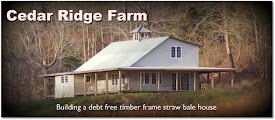Some hay, some snow, and a new banjo
Some of you may wonder where I’ve been. The answer is, no where really. I just haven’t posted in quite a while. I do intend to rectify that, and this post will be the beginning.
Things on the homestead are going well. It’s winter now, so some things are slower. The fewer daylight hours and weather affect how much time I spend working on different projects outside. There are chores to be done every day. So, I get out rain or shine at least twice a day.
I moved the cows to the barn just before Thanksgiving. I put it off as long as I could. The limited amount of rain that we had during the summer months affected how the grass grew. I could probably have kept them out on grass for another two weeks, but we were planning on 
I bought a few more bales of hay in order to ensure I have enough to last through the winter months. Usually, we are able to bale enough to feed the animals until grass greens up in the spring, but I only had two cuttings of hay this summer. Also, I was pasturing the cows on part of the ground I usually hay. I hope to not feel a need to buy any next year.
This winter started early with colder temperatures and snow. We’ve had more snow already than we’ve had many winters. We’ve also had temperatures 10 to 20 degrees below normal. 
I’ve not brought home any new composting material for several weeks. 
I bought a banjo with the intention of learning to play. It’ll take a while, I’m sure, but I’ll learn. It would be great to just be a good banjo-player, but there’s a process for becoming one. I can’t skip the process. I’ve found some good resources online. I’m learning a lot from Patrick Costello who has written a few books (which are available through Amazon or for free download) and has a ton of instructional material available online, including a lot of YouTube videos. I bought a Gold Tone CC-OT and am learning frailing/clawhammer banjo. Whenever my skills are good enough, I’ll share some of my playing in a video or two. It may be a few months!
I already play the guitar some. I bought a guitar seven years ago and taught myself how to play. I’m not that good with it, but I’m learning more along with my banjo learning. I’d like to be able to play the guitar better, too. So, hopefully, I’ll become relatively proficient on both instruments.
Well, ya’ll stay warm. I’ll try to keep you updated more regularly on the goings on at our place.

















































